

Verify. Get_certificate. Website Creation Made Easy. Podcasting. Website Creation Made Easy. Online Resources Archives - Page 2 of 8 - Best Teacher Resources Blog. The Educator as a Design Thinker. [Note: This was originally written for and posted in the Heinemann Digital Campus.

Unlimited access to more articles like this, as well as video clips and full-length books are available on the Heinemann Digital Campus. Subscribe at: Information abundance, emerging technologies, broad ranging social connections via social media, and the ability to create, produce,and share original works of writing, art, inventions with authentic audiences have created a new age of learning, one that is qualitatively different than the 20th century. Tony Wagner, author of Creating Innovators: he Making of Young People Who Will Change The World, stated “”The world doesn’t care what you know, but what you can do with what you know.”
Schools need to reflect these changes. This movement to build a generation of design thinkers could not be more timely or more relevant. Every day you design ways to interact with your students around content. Essential Questions Guiding Strategies Ideo. Pfau, P. (2014). RISE Model - Peer Feedback - el Wray Design. < Back to RISE Home "I like it!
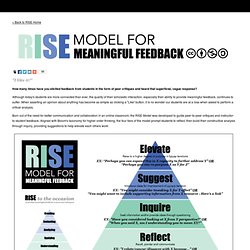
" How many times have you elicited feedback from students in the form of peer critiques and heard that superficial, vague response? Although today's students are more connected than ever, the quality of their scholastic interaction, especially their ability to provide meaningful feedback, continues to suffer. When asserting an opinion about anything has become as simple as clicking a "Like" button, it is no wonder our students are at a loss when asked to perform a critical analysis. Blended Learning Model Definitions. The definition of blended learning is a formal education program in which a student learns: at least in part through online learning, with some element of student control over time, place, path, and/or pace;at least in part in a supervised brick-and-mortar location away from home;and the modalities along each student’s learning path within a course or subject are connected to provide an integrated learning experience.
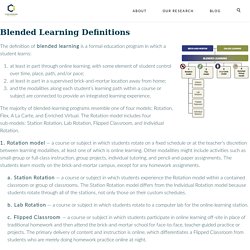
The majority of blended-learning programs resemble one of four models: Rotation, Flex, A La Carte, and Enriched Virtual. The Rotation model includes four sub-models: Station Rotation, Lab Rotation, Flipped Classroom, and Individual Rotation. 1. Rotation model — a course or subject in which students rotate on a fixed schedule or at the teacher’s discretion between learning modalities, at least one of which is online learning. A. B. C. D. Coach's Eye Sports Video Analysis App. COFA Online Gateway. Contact Us Home LTTO Episodes Learning To Teach Online Episodes context, planning and teaching case studies technical glossary context, planning and teaching.
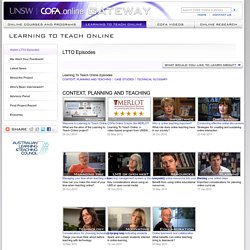
Risemodel.com. A Simple URL Shortener. Coach's Eye Sports Video Analysis App.
Design Quality OnlineCourse. Designing for a Quality Online Course In this framework/guide, the model used for course development is a project team-based structure.
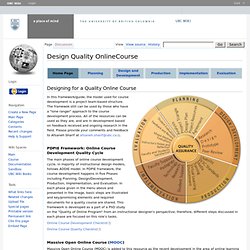
The framewok still can be used by those who have a "lone ranger" approach to the course development process. All of the resources can be used as they are, and are in development based on feedback received and ongoing research in the field. Please provide your comments and feedback to Afsaneh Sharif at afsaneh.sharif@ubc.ca.
Module 4. Module 5. Module 6. Module 7. Module 8. Planning for Online Learning - Centre for Teaching and Learning. Teaching Methods > Online/Blended Key Shifts in Thinking for Online Learning When planning for teaching online there are several key shifts in thinking to transform a traditional classroom based course for online delivery.
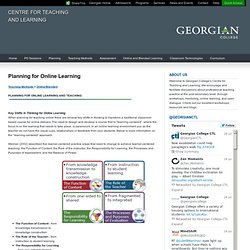
The need to design and develop a course that is “learning-centered”, where the focus is on the learning that needs to take place, is paramount. In an online learning environment you as the teacher do not have the visual cues, relationships or feedback from your students. Below is more information on the “learning-centered” approach. Weimer (2002) described five learner-centered practice areas that need to change to achieve learner-centered teaching: the Function of Content, the Role of the Instructor, the Responsibility for Learning, the Processes and Purposes of Assessment, and the Balance of Power. For more information on learning-centered approaches please visit the following sites and articles; Means to Evaluate your Online Course Needs of the Online Learner. Choosing the Best Technology.
UAF eLearning Instructor Training Online Grow Skills Share your resources or thoughts with us.
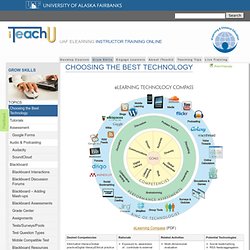
Use #iTeach as your tag! Choosing the Best Technology Print Friendly eLearning Compass (PDF) Original source: Jennifer. Blended learning solution in practice. Blended learning is not only the buzz word.
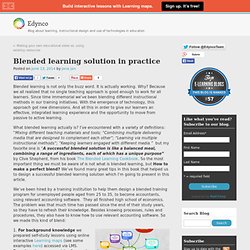
It is actually working. Why? Because we all realized that no single teaching approach is good enough to work for all learners. Since time immemorial we’ve been blending different instructional methods in our training initiatives. With the emergence of technology, this approach got new dimensions.